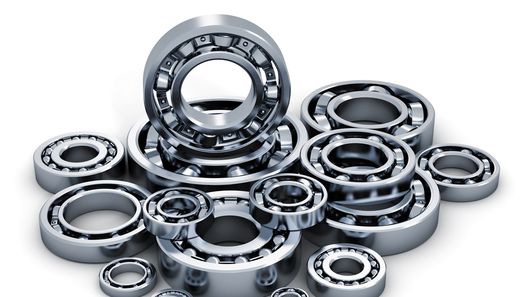Greaseless ball bearings: A revolutionary spin on a design that's been around for ages
By Loz Blain
May 26, 2015

Coo Space claims it has massively reduced bearing friction by eliminating the cage generally used to keep balls separated in the bearing races (Credit: Shutterstock)
While the ball bearing might be among Leonardo Da Vinci's less celebrated inventions, it's arguably one of his most important. Though it was initially designed as part of his failed helicopter invention, it has stood the test of time – there are ball bearings of a similar design to Leonardo's in just about every moving machine.
The basic design in simple: in order to reduce rotating friction between two pieces, the bearing has an inner and an outer race. A number of balls roll in between these two races, allowing the smallest possible contact points between the inner and outer races. The balls roll a lot easier than the two pieces would slide against each other.
The ball bearing can only work if the balls are kept separated and evenly spaced throughout the races. Touching each other would produce friction, and uneven spacing would cause the bearing to be weak under loads from a certain direction. So most bearings use cages to separate and evenly space the balls.
These cages cause friction and to reduce this friction, you generally need to lubricate your bearings, often with thick grease to ensure a long lifespan.
All of which is a long way of getting around to this: Japanese company Coo Space has come up with a way to reliably space the balls out without needing a cage.
The Autonomous Decentralised Bearing (ADB) puts a small indentation, or groove, into the outer bearing race. As the balls slide over this tiny groove, they slow down ever so slightly, and then speed back up. This does nothing to affect the bearing's regular performance, but if two balls are touching each other as they cross over the groove, the first ball's deceleration puts a tiny brake on the second ball, which separates the two as they go around the races.
It's an incredibly simple and tiny change, but it does a remarkable job. In the video below, a bearing is rotated with a group of very unevenly spaced balls in it. Within a dozen or two turns, the groove has spaced them all out to just about even, and that's where they stay.
Without the need for a cage, you can run these bearings unlubricated, and that's where the real performance benefits come in. Coo Space claims the ADB experiences as little as 10 percent of the friction of a regular ball bearing and demonstrates this by spinning a couple of bearings to show just how much longer they'll spin than a lubricated cage bearing. Hint: lots longer, which should come as no surprise to anyone who's played with a regular lubricated bearing.
Coo Space is already manufacturing prototypes and looking to partner with larger manufacturers to bring the bearings to market.
Source: DigInfo
copyright © Gizmag 2003 - 2015
http://www.gizmag.com/greaseless-ball-bearings-coo-space-adb/37689
